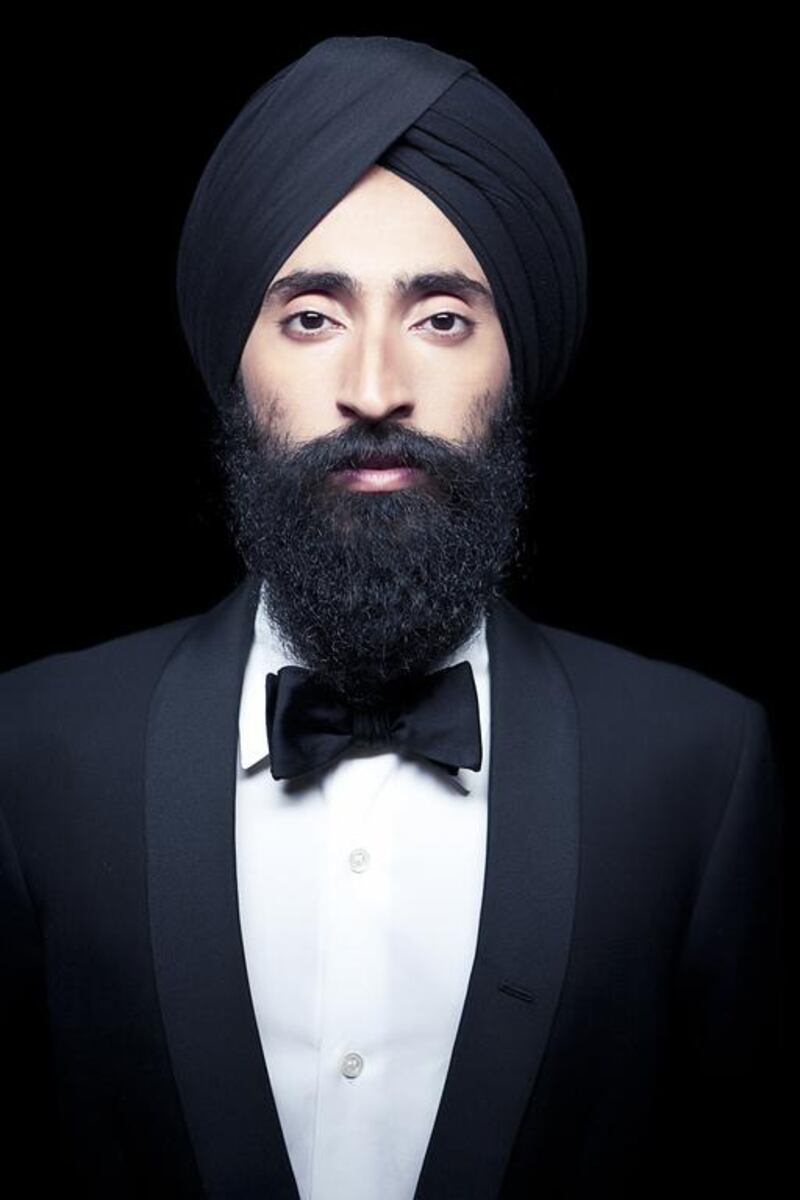For jeweller Waris Ahluwalia, the creation process starts with a moment, a thought or a feeling. “It all progresses from there,” says the founder of House of Waris.
Born in Punjab, India, before moving to New York at the age of 5, the Indian-American designer and Hollywood actor never intended to become a jewellery designer, he says. “My current road is quite a surprise to me. As I always say, I didn’t choose this path – jewellery chose me, and I fell in love with the world it has allowed me to create.”
Ahluwalia is perhaps best known for making headlines in February, when he was barred from a flight in Mexico for refusing to remove his turban. He made a point of not leaving the airport without an apology. But long before this, in 2007, he launched House of Waris, on the back of two rings that he had custom-made for himself. “I was at Maxfield in Los Angeles and the rings caught the attention of the sales staff,” he recalls.
While Ahluwalia has no formal training in jewellery design, as with many other areas of his life, he relies on his instincts. “[Instinct] is a skill we’re given, a tool. It’s up to us to sharpen it and learn to use it.”
It is this instinct that has led to the growth of his brand, which now works with artisans from more than 15 countries, and to collaborations with names such as the French ready-to-wear brand A P C and fashion designer Benjamin Cho. Ahluwalia’s creations are available through the brand’s e-commerce site, www.houseofwaris.com, or via appointment at his showroom in New York.
While Ahluwalia has created countless pieces, the one collection that is particularly meaningful to him is a set of enamel bird pendants that were inspired by a stay in room 503 at the Hotel Raphael in Paris.
“It was there that I first encountered a beautiful bird painted on the wall. This is where my worlds collided. I could visualise this bird as a beautiful hand-enamelled piece of jewellery. The enamelling that is usually relegated to the rear side of traditional Indian jewellery. From there I set off on my search for a few more fine-feathered friends.”
Bird motifs are a recurring theme in the House of Waris portfolio, whether in the case of the Spero pavé diamond earrings, which are set in 18-carat white gold, or the one-of-a-kind Octavian enamel eagle pendant. The motif is also at the heart of the brand's collaboration with American filmmaker and photographer Andrew Zuckerman – Ahluwalia created a special collection to mark the launch of Zuckerman's 2009 book, Bird.
Ahluwalia is committed to having a positive effect on the world, both socially and environmentally, and he uses ethically sourced materials when designing his jewellery. His 2014 Forevermark collection, for example, used only ethically sourced diamonds.
“We want to give our audience a chance to consume consciously, a chance to create a more thoughtful way of living,” he says, an idea influenced by the philosophy of Swiss designer Yves Béhar, someone Ahluwalia says is an inspiration.
“Béhar’s philosophy on a designer’s responsibility is something we incorporate into our work. We should create products that do social good and are commercially viable at the same time.”
Béhar’s studio, Fuseproject, designed the bottle used for Whole World Water. The organisation, which has backing from the likes of Richard Branson, Gabriel Byrne and Ahluwalia, is dedicated to creating access to clean and safe water around the world.
Ahluwalia also works with Fundación Haciendas del Mundo Maya in Mexico, a non-profit organisation that teaches women traditional jewellery techniques. This offers them a way to make a supplemental income and achieve a level of independence.
Ahluwalia admits that he’s generally pulled towards things that make him happy. “I do what nourishes my soul and those along with me on this journey. The goal along the way is to stay true to myself and the values my parents and culture have given me.” This includes his decision to make the jump into acting, which, as was the case with jewellery, was a happy and “alarmingly simple” accident.
"Acting found me, just as jewellery did. Wes [Anderson] asked me to be in his movie, The Life Aquatic with Steve Zissou, which was the first movie I did, and it's been an incredible adventure since then."
The movie was released in 2004, and Ahluwalia has since made appearances in several other Anderson films, including Hotel Chevalier, The Darjeeling Limited and The Grand Budapest Hotel, working alongside the likes of Bill Murray, Adrien Brody and Ralph Fiennes.
So what’s next for House of Waris? Ahluwalia says he’ll continue to travel the world in search of more artisans for the brand’s different projects. There’s also, unsurprisingly, a few environmentally driven initiatives currently in the works, including a collaboration with Elephant Family, a small NGO that looks to protect the Asian elephant from extinction.
For more information, visit House of Waris.
Read this and related stories in Luxury magazine's Watches & Jewellery issue, out with The National on Thursday, April 14.
alane@thenational.ae





